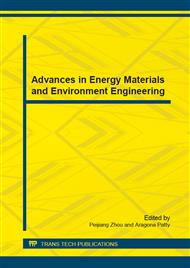p.156
p.161
p.170
p.175
p.181
p.185
p.189
p.193
p.197
Comparison and Analysis of ONU Sleep Mechanism Based on OPNET for Green Fiber-Wireless Access Network
Abstract:
As one of promising "last mile" scheme for broadband access network, Fiber-Wireless (FiWi) access network has the advantages of high capacity, long distance, low cost etc because it is the integration of optical back-end and wireless front-end. At the same time, energy consumption of FiWi access network is an important factor that limits the development of networks. A number of ONU sleep states such as ONU power shedding state, ONU doze state, ONU deep sleep state and ONU fast sleep state have been proposed to obtain low-power ONU state, which indirectly reduce energy consumption of networks. However, these low-power states of ONU are born to coordinate to green Passive Optical Network (PON), of which the function of ONU is different from FiWi. In this paper, two low power ONU sleep mechanisms called Static ONU Sleep (SOS) mechanism and Dynamic ONU Sleep (DOS) mechanism, respectively, are proposed and embedded into FiWi access network. By simulation and analysis based on OPNET 14.5, this paper shows that the DOS mechanism has a better performance than SOS, and both of them can save energy of FiWi access network.
Info:
Periodical:
Pages:
181-184
Citation:
Online since:
December 2014
Authors:
Keywords:
Price:
Сopyright:
© 2015 Trans Tech Publications Ltd. All Rights Reserved
Share:
Citation:


